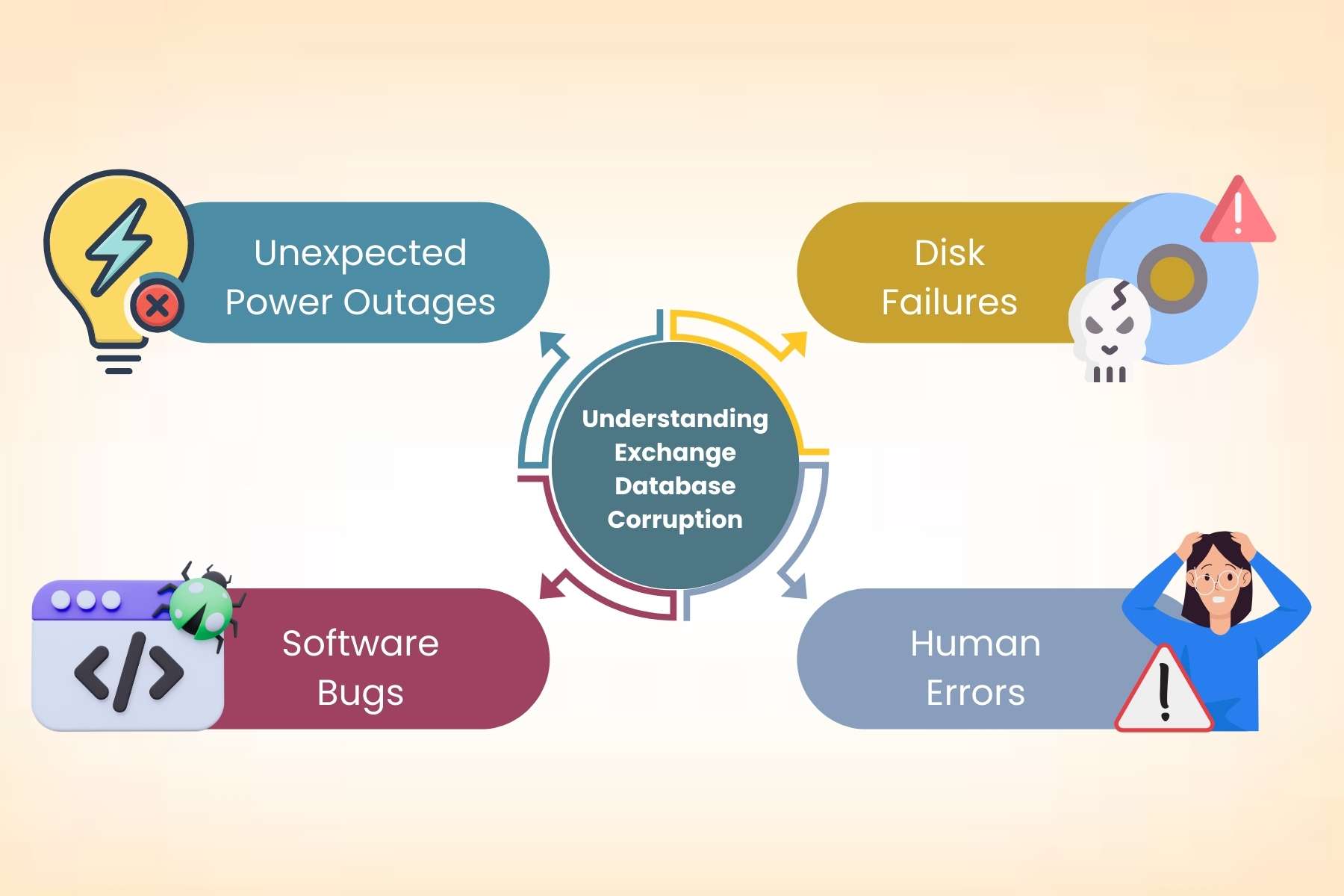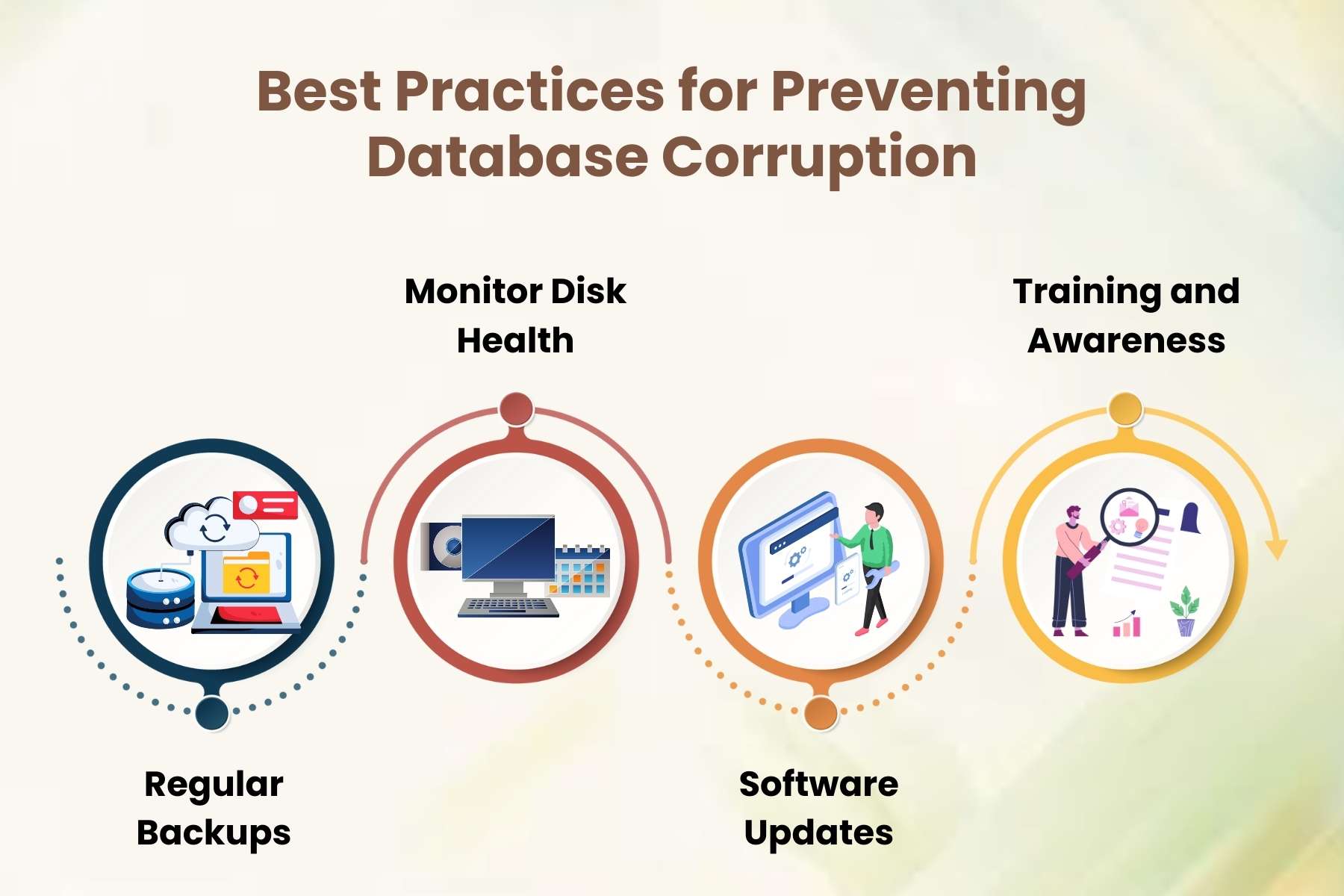Today, when the world is evolving and advancing digitally, maintaining the privacy of your data is very important, especially for organizations that rely on Microsoft Exchange Server for their communication needs. Hardware failure, shutdowns, and software bugs are some of the reasons why the exchange databases sometimes become corrupted. This is where an exchange database recovery tool becomes essential.
Here we have provided you the insights into the exchange database recovery tool. The importance of such tools, their features, and how to choose the right one for your needs.
Understanding Exchange Database Corruption

Before diving into the specifics of recovery tools, it’s vital to understand how Exchange databases can become corrupted. Common causes of corruption include:
1. Unexpected Power Outages
Sudden power losses can lead to incomplete writes in the database.
2. Disk Failures
Hard drive malfunctions are a frequent cause of data corruption.
3. Software Bugs
Issues in the Exchange Server software may lead to database corruption.
5. Human Errors
Accidental deletions or misconfigurations can also contribute.
Identifying the symptoms of database corruption is crucial. Users may experience issues such as:
- Mailbox access problems
- Error messages when sending or receiving emails
- Inability to mount the database
When faced with these issues, an exchange database recovery tool can help restore functionality and preserve your critical data.
Features of an Exchange Database Recovery Tool
When selecting an exchange database recovery tool, it’s essential to consider its features. Here are some key aspects to look for:
1. Ease of Use
A user-friendly interface ensures that even non-technical users can navigate the tool effectively.
2. Supported Formats
The tool should support various Exchange database file formats, primarily EDB files.
3. Preview Functionality
The ability to preview recoverable items before performing the recovery is invaluable.
4. Selective Recovery Options
Look for tools that allow you to recover specific mailboxes or items, rather than restoring the entire database.
5. Compatibility
Ensure the tool is compatible with your version of Microsoft Exchange Server and Windows operating system.
6. Comprehensive Scanning
A robust scanning feature that detects all types of corruption is crucial for effective recovery.
Top Exchange Database Recovery Tools
Several exchange database recovery tools are available in the market, each offering unique features. Here are three popular options:
1. Stellar Repair for Exchange

- Overview: This tool is known for its comprehensive recovery capabilities and user-friendly interface.
- Key Features: Stellar Repair can recover mailboxes from corrupt EDB files and save them in various formats, including PST, EML, and MSG.
- Why Choose It: The preview feature allows users to view all recoverable items before initiating the recovery process.
2. Kernel for Exchange Server Recovery
- Overview: This tool specializes in recovering corrupt EDB files and restoring mailbox items effectively.
- Key Features: It supports batch recovery, allowing users to restore multiple mailboxes simultaneously.
- Why Choose It: With its advanced filtering options, users can search and recover specific emails based on various criteria.
3. SysTools Exchange Recovery
- Overview: This tool offers a simple yet effective solution for Exchange database recovery.
- Key Features: SysTools Exchange Recovery can recover deleted items and export mailboxes to PST, EML, and MSG formats.
- Why Choose It: The tool is designed for both novice and advanced users, making it a versatile option for all skill levels.
How to Use an Exchange Database Recovery Tool?
Using an exchange database recovery tool typically involves a few straightforward steps:
1. Installation:
Download and install your chosen recovery tool on a system that can access the corrupt EDB file.
2. Select the EDB File:
Launch the tool and browse to select the corrupt EDB file you wish to recover.
3. Scanning Process:
Initiate a scan to identify the extent of corruption and recoverable items.
4. Preview Items:
After scanning, use the preview feature to review recoverable emails and other mailbox items.
5. Select Items for Recovery:
Choose the specific items you wish to recover, or opt for full recovery.
6. Export Options:
Finally, export the selected items to your desired file format.
Best Practices for Preventing Database Corruption

While an exchange database recovery tool is invaluable, preventive measures are equally important to avoid future issues. Here are some best practices:
1. Regular Backups:
Implement a robust backup strategy to ensure you have a recent copy of your data.
2. Monitor Disk Health
Regularly check the health of your storage devices to catch potential failures early.
3. Software Updates
Keep your Exchange Server and related software updated to mitigate bugs that can lead to corruption.
4. Training and Awareness
Educate your team about the importance of data integrity and best practices for using email systems.
Conclusion
In conclusion, for any organization that is using Microsoft Exchange Server, the use of an exchange database recovery tool is crucial. With the potential for data corruption always lurking, having a reliable recovery solution at your disposal can save your organization from significant data loss and downtime. By understanding the features to look for and adopting best practices for data management, you can ensure the integrity and availability of your important communications. So it is very important to invest wisely in an exchange database recovery tool and protect your data today.






